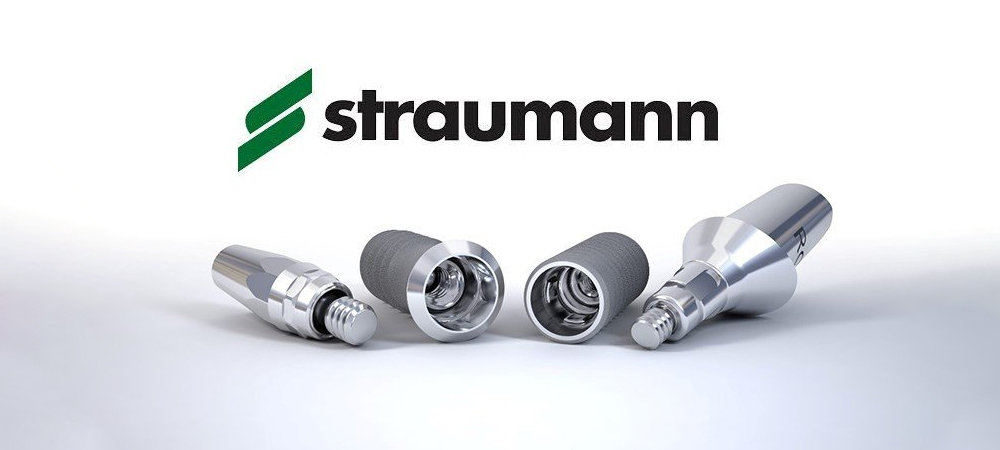
THE UĞUREL ORAL AND DENTAL POLYCLINIC, strives to bring you the very best that dentistry has to offer. A large part of delivering this top-of-the-line dentistry relies on technological advancements which allow your treatment to be completed in a more efficient, effective, and comfortable manner. As dentistry is one of the most rapidly advancing fields, Uğurel Oral And Dental Polyclinic, routinely invests in continuing education and new technology in order to remain at the forefront of our craft so that we may best serve you, our patient!
We use the best implant brands from South Korea (Megagen) and Switzerland (Straumann Group) SEE IMPLANT SECTION
All implants are approved clinically ( proven as well by the FDA ) and guaranteed.SEE IMPLANT SECTION
3 SHAPE TRIOS DENTAL INTRAORAL SCANNER 3D 
It’s a valuable visual tool that helps to identify the treatment needs of the patient.
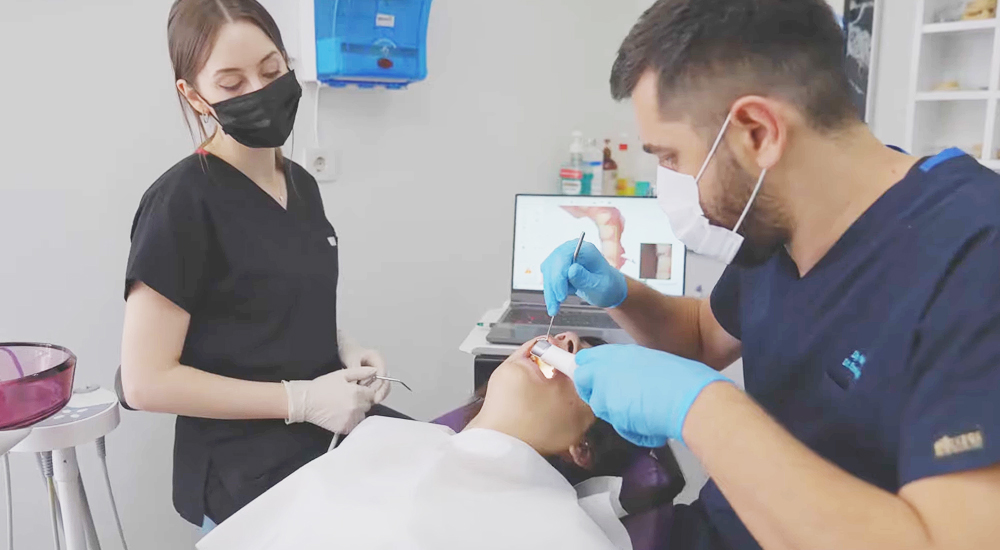
It’s a valuable visual tool that helps to identify the treatment needs of the patient.
It creates a visual record of changes over time. It supports proactive and preventative care because changes highlighted in the scans helps our dentist to identify erosion, abrasion, cracked teeth, gingival recession, caries, and more – sooner and more easily. Even patients will see the differences.
Gives patients a comparative look at their own dentition.Our dentist,will be able to show the patients exactly what’s happened between their current and previous visit. Measurements, color-coded visuals and overlays make it easy to give them a clear understanding of why the treatment our dentist suggest is right for them.
Benefits of Using the 3Shape TRIOS Dental Intraoral Scanner for Dental Patients
The 3Shape TRIOS dental intraoral scanner is a hand-held 3D scanning tool that is redefining the fundamentals of digital impression techniques in the dental industry. One of the most important aspects of the 3Shape TRIOS dental intraoral scanner is the impact it has on a patient’s overall dental experience.
Take a look at some of the following key advantages of this groundbreaking dental technology.
More Comfortable
When compared to the traditional molding techniques that often cause high levels of discomfort in patients, the 3Shape TRIOS dental intraoral scanner offers a far more quick and convenient method of getting an accurate image of a patient’s teeth in order to create an impression. Instead of forcing a patient to remain seated in a chair for fifteen minutes to complete the impression procedure, the 3Shape TRIOS dental intraoral technology can scan teeth wirelessly in a matter of seconds and without the use of powder, which helps save time and decrease patient discomfort to a large degree.
Improved Dentist-Patient Communication
The 3Shape TRIOS dental intraoral scanners allow our dentists to display a patient’s 3D-impression of their teeth on a screen almost immediately after the scan is complete. After seeing an up-close view of a digital impression, patients can grasp a better understanding of the condition of their teeth. The scanner also develops impressions in full color to aid the dialogue between our dentist and his or her patient, and improve treatment.
Treatment Versatility
The 3Shape TRIOS dental intraoral scanner is highly versatile and able to service a wide range of different dental treatments.
CAD / CAM TECHNOLOGY
The manufacturing industry has utilized computer-aided design (CAD) and computer-aided manufacturing (CAM) for decades to create precision tools and parts. The dental profession first adopted this technology in 1985, revolutionizing the construction of dental restorations and prostheses. Since then, CAD/CAM dentistry has only advanced, providing benefits to both professionals and patients.
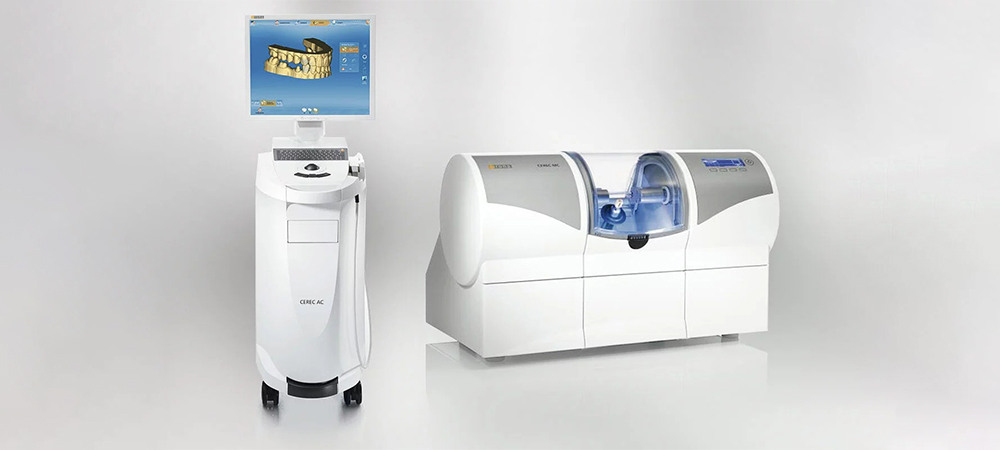
Understanding Digital Dentistry and the CAD/CAM Process
CAD/CAM dentistry describes the software that makes it possible for dental professionals to perform complex restorations faster, more efficiently, and sometimes more accurately. Both dental practices and laboratories use CAD/CAM technology to construct restorations like crowns, inlays, onlays, veneers, bridges, dentures, and implant-supported restorations from high-strength ceramic. Here’s what to expect from a restoration procedure using CAD/CAM.
- Tooth Preparation. Your dental professional will prepare the site for your restoration by removing all decay or portions of the structurally unsound tooth.
- Intraoral Scanning. Next, an optical scanner will digitally capture the tooth preparation and surrounding teeth to create a 3D custom image.
- Restoration Design. With those 3D images, the dental professional will use the CAD software to design the final restoration.
- Next, a milling machine takes the design and shapes the crown, veneer, inlay, onlay, or bridge from a single block of ceramic.
- Sintering and Polishing. The restoration is stained or glazed to look more natural before being polished.
- Finally, the restoration is permanently placed in your mouth to complete your smile.
This whole process could take anywhere from 45 minutes to two hours, depending on the case’s complexity. Still, CAD/CAM requires less time and effort than traditional laboratory methods.
When is CAD/CAM Technology Used ?
CAD /CAM Technology is used in many dental treatment circumstances including ;
- Laminate veneers and Zirconium Crown,
- Cracked and fractured teeth treatments,
- Gapped and crooked teeth treatments,
- Amalgam and composite filling treatments.
Benefits of CAD/CAM in Dentistry
The use of CAD/CAM technology provides benefits not only for dental professionals but also for patients. Some of the significant advantages include:
- Single-Visit Treatments. Using traditional laboratory methods, your dentist or prosthodontist would prepare your tooth, make an impression, and send the impression to the lab to create the final restoration. With CAD/CAM technology, the dental professional can sometimes complete all these steps in a single visit, allowing for fewer disruptions in your schedule.
- Digital Impressions. If you’ve ever had a conventional impression, you immediately understand the benefits of a digital system. The traditional method requires the patient to place a tray with a thick, gooey material — called alginate — in their mouth and hold for two to five minutes until the material sets. A scanner is placed in the patient’s mouth with digital impressions and moved around the affected area — like waving a magic wand.
- Cost-effectiveness. CAD/CAM technology eliminates several outsourcing costs for your dental professional, and these savings may be passed onto the patient. Be sure to ask about your options and the associated costs.
Is CAD/CAM Dental Work Right For You?
Not every tooth can be treated with CAD/CAM dentistry, so talk to your dental professional about your best options. Because precision and fit are essential for your restoration or prosthesis, the practitioner may prefer using the conventional laboratory method for complex fabrications. Start by asking your dentist about CAD/CAM technology and how it may impact your restoration appointment.
ORTHOPANTOMOGRAPH OP 30 
In our polyclinic, we use, the Orthopantomograph OP30 panoramic dental X-ray produced by Instrumentariumen, the first manufacturer of the panoramic device, which placed the word Orthopantomograph in the literature. With Orthopantomograph OP 30, it is possible to use a small dose of radiation and provide the highest quality image.
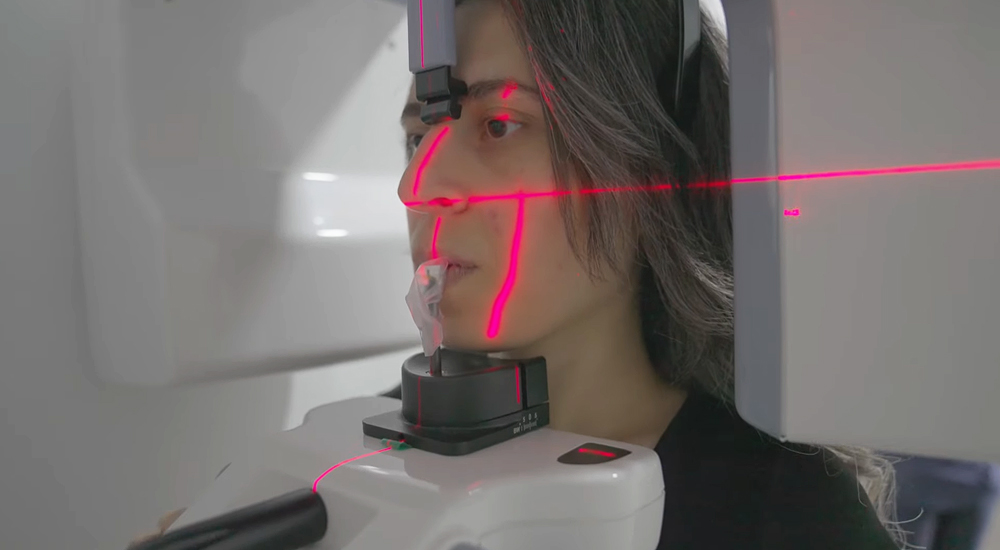
What is an orthomantograph used for ?
An orthopantomogram (OPG) is a common radiograph used to identify the hard tissues of the oral cavity and surrounding skeletal structures. It is an extra-oral radiograph that approximates the focal trough of the mandible.
When to use a dental panoramic tomography ?
Panoramic dental x-ray uses a very small dose of ionizing radiation to capture the entire mouth in one image. It is commonly performed by dentists and oral surgeons in everyday practice and may be used to plan treatment for dentures, braces, extractions and implants. This exam requires little to no special preparation.
Why do I need an OPG ?
OPGs are used regularly in routine checkups to monitor and assess the health of your teeth and gums. Oral conditions that can be diagnosed and monitored by OPGs include: oral infections & abscesses, gum diseases.
PHILIPS ZOOM 

Can Zoom whitening damage teeth?
Zoom teeth whitening is an in-office, dentist-approved method for achieving a brighter smile, and it is safe for teeth enamel. “As long as you stick to dentist-approved methods, whitening your teeth is considered safe.
Zoom teeth whitening does not harm the enamel of teeth and can potentially strengthen the hardness of enamel by up 25-37%. This is due to the presence of the ACP (amorphous calcium phosphate) in the gel used to whiten your teeth.
The Zoom! In-Office Whitening System uses proprietary technology to whiten your teeth ( depending of your tooth structure ) an average of 2 – 3 shades. It’s ideal for anyone who wants immediate results.
Philips Zoom is not only proven to whiten teeth up to three shades, it’s also completely safe.
DIGITAL SMILE DESIGN
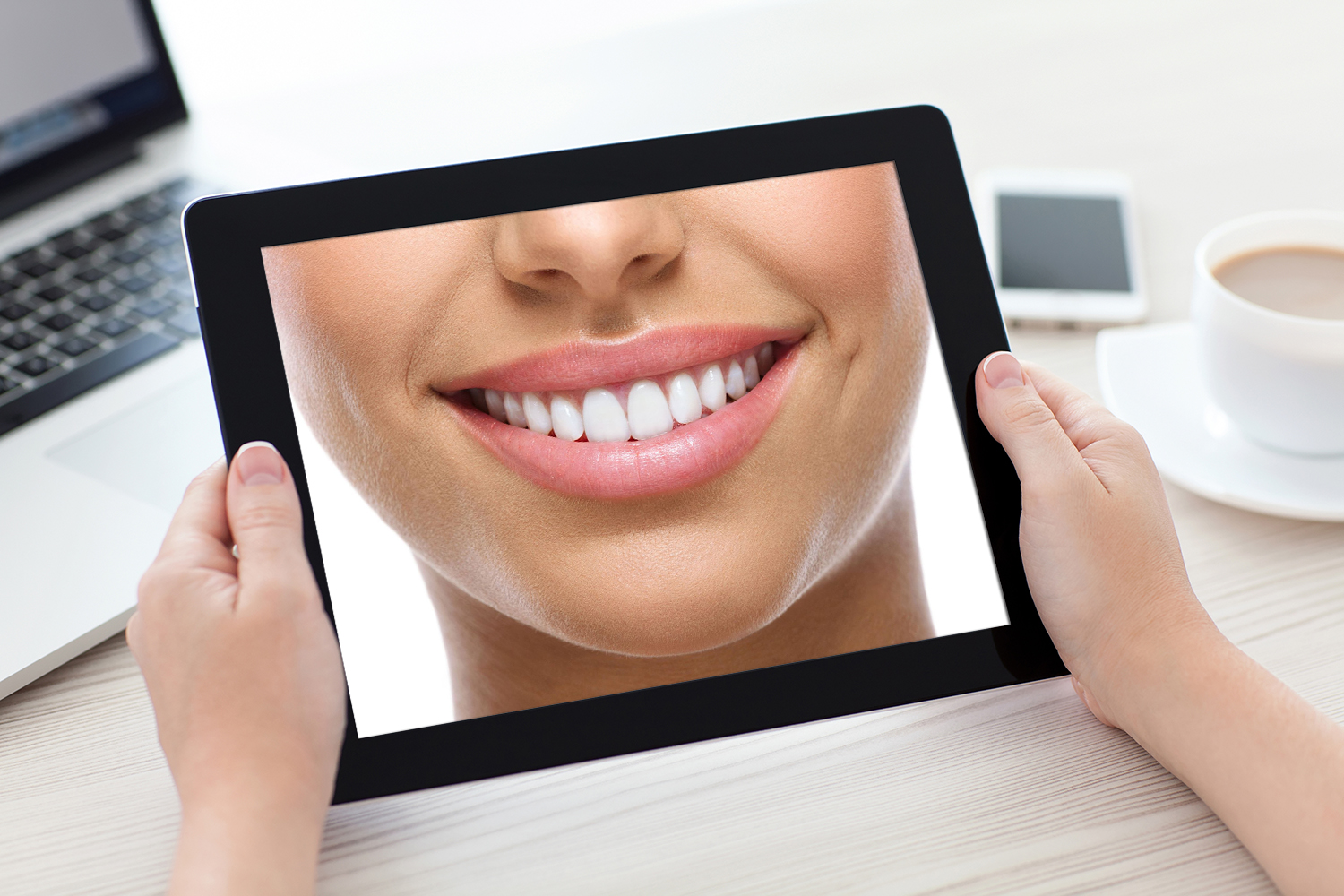
Journey to the perfect smile is not a dream anymore. At our polyclinic, we aim to design the natural and beautiful smile you have ever dreamed of. To accomplish this goal, our doctors and staff will relentlessly work with you to design the right smile that is in harmony with your physical look and, most importantly, with your personality. Digital Smile Design software allows us to customize your smile until we reach perfection.
And small details make a difference.
